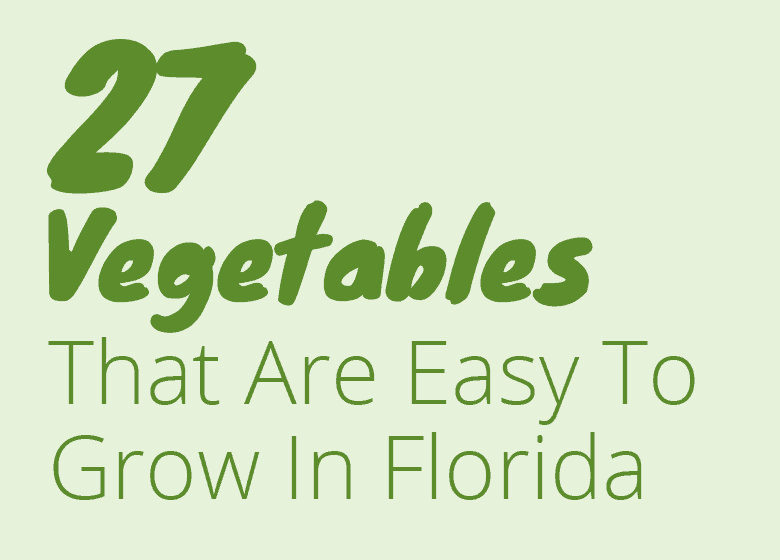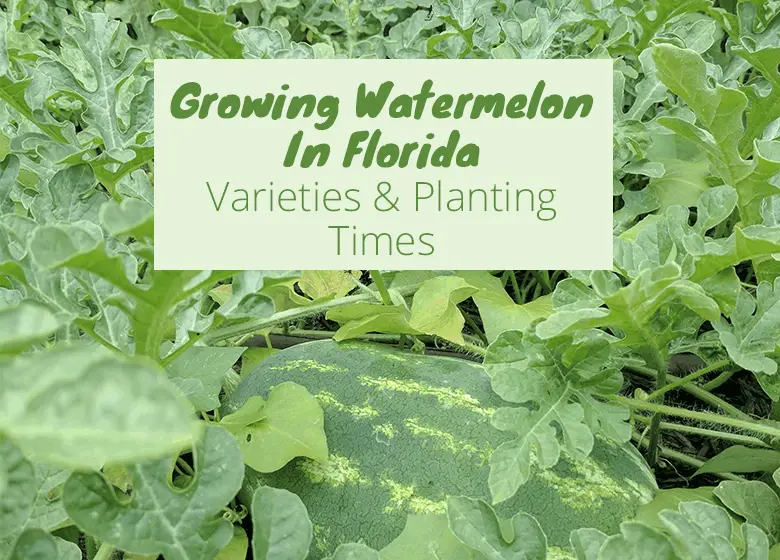
I’ve had mixed results with growing watermelon in Florida. However, some of my problems had to do with timing and my own underestimation of how large these plants actually grow.
The best time to plant watermelon in Florida is in the early spring and once again in the early fall. Florida has an ideal climate for growing watermelon and is a leading producer of the fruit.
There are a number of varieties of watermelon that grow well in Florida. Read on to find out about the different varieties as well as how much space you should give these guys and exactly when you should plant.
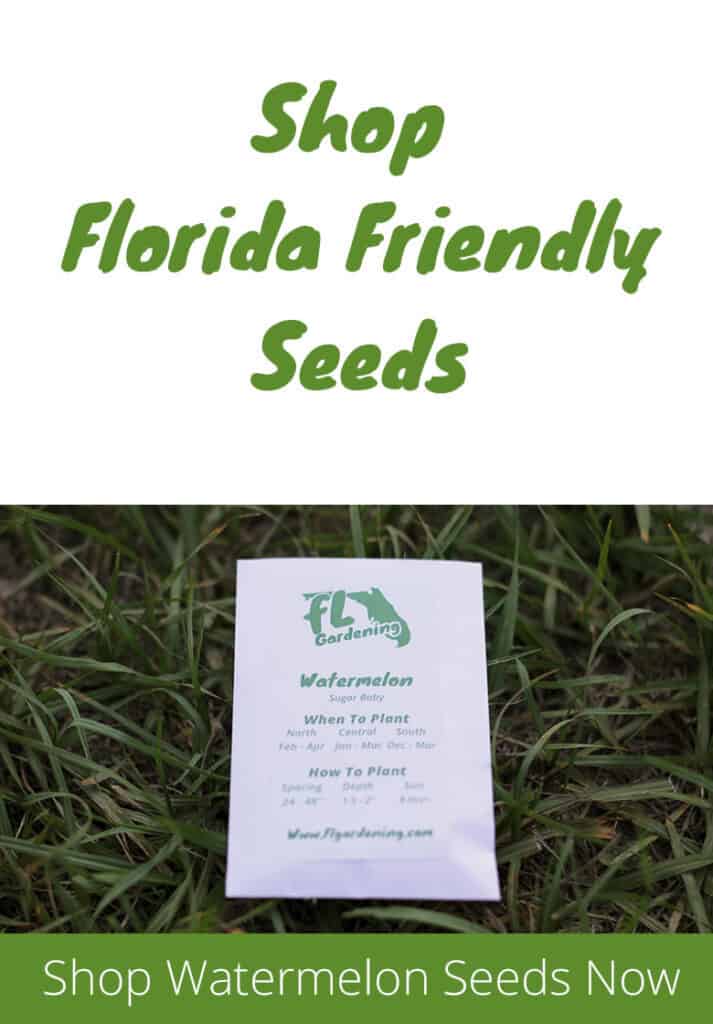
When To Plant Watermelon In Florida
The date will change, depending on where you live. North, central and south Florida will all have slightly different planting times.
- North Florida: Mar-Apr & July
- Central Florida: Jan-Mar & Aug
- South Florida: Jan-Mar & Aug-Sep
Watermelon thrives when temperatures are around 80°F. The plant can handle temperatures around 90°F but you might notice less fruit production when temperatures are regularly this high.
Temperatures below 50°F may result in decreased fruit quality. Melons that are grown in lower temperatures usually have much less flavor.
Watermelons take anywhere from 65-90 days to produces fruit. Use the dates above as a guideline and your best judgment to determine the best planting date.
Best Varieties of Watermelon To Grow In Florida
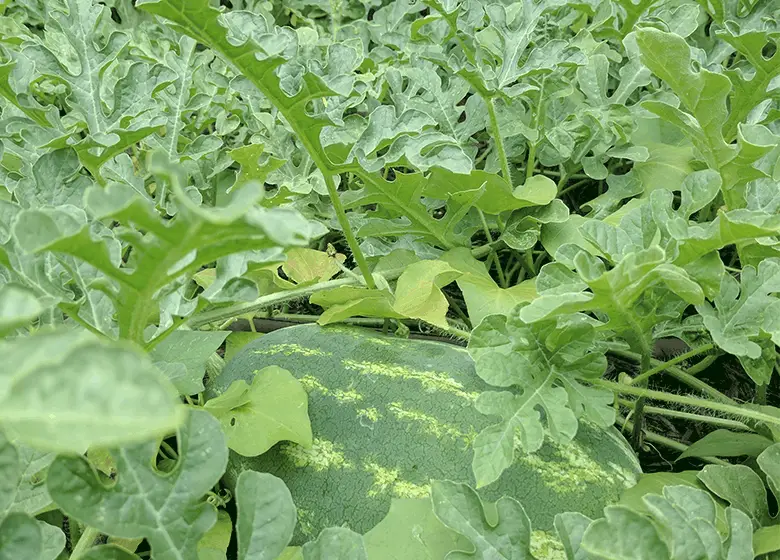
There are a number of different watermelon varieties that will grow in Florida. the fruits on these plants can range anywhere from 6-50 pounds according to UF.
There are large varieties of watermelon and also smaller varieties, in both fruit production and growth habit. the size of your growing area may limit you in which variety you choose.
Watermelon Varieties
- Large – Charleston Grey 133, Crimson Sweet, Jubilee, Moons & Stars
- Small – Icebox, Mickeylee, Sugar Baby
Another good thing to keep in mind is where you are going to store your melons when they are harvested. I ran into a fridge space problem the last time I harvested mine, my fridge doesn’t really have space for 2 20lb melons!
Best Location For Watermelon
Watermelons need plenty of space, sunshine, and water. plants can really spread. I severely underestimated the size of these plants the first time I grew them. The vines can spread to be over 7 feet long.
I had a 12-foot garden bed and one plant spread the entire length.
[try to find picutre of garden bed at Jos]
Plant seeds in an area that receives at least 8 hours of sunshine every day.
Watermelons aren’t super picky plants when it comes to soil. The only thing that you need to do is to make sure that it is well-draining. The plants don’t do well when grown in muddy and mucky soil.
I’ve always had good luck with a soil mix that looks something like this:
- 40% Coco coir
- 40% Compost
- 20% perlite
- Worm castings
- Mykos
You can most of these things at your local nursery. The coco coir can be replaced with peat moss. The mykos isn’t 100% necessary but I have noticed good results with it.
This soil mixture is pretty good at retaining water, but a nice thick layer of mulch is a must. Watermelons are thirsty plants and you need to make sure that they get a drink frequently.
Planting Watermelon
Watermelons don’t do the best when they are transplanted. It’s a good idea to plant your seed directly into the garden. I’m not saying that you can’t transplant watermelons, because you can, but you must be very gentle with them.
Each variety will have slightly different space requirements, check the seed packet for those. But a general rule of thumb for growing watermelons is to plant seeds 36 inches apart and give a row spacing of 7 to 8 feet.
Fertilizing Watermelon
Watermelons, like tomatoes, are harvested for their fruits. They are unlike collards or kale, which are harvested for their leafy greens.
Fruiting plants benefit from fertilizers that are focused on phosphorous, while plants whose primary focus is leaf growth benefit from nitrogen focused fertilizers.
The 3 numbers that you see on bags of fertilizer are the N(nitrogen)- P(phosphorus)- K(Potassium) values. Nitrogen promotes green leafy growth, Phosphorous promotes healthy root developments and flower production and potassium is a good overall health booster.
Watermelon Pests And Diseases
The most common pest that I ran into when growing watermelons was aphids. They are tiny little greenish / yellow bugs that live on the undersides of leaves.
They pierce the plant with their tiny little mouths and pass diseases and viruses to the plant.
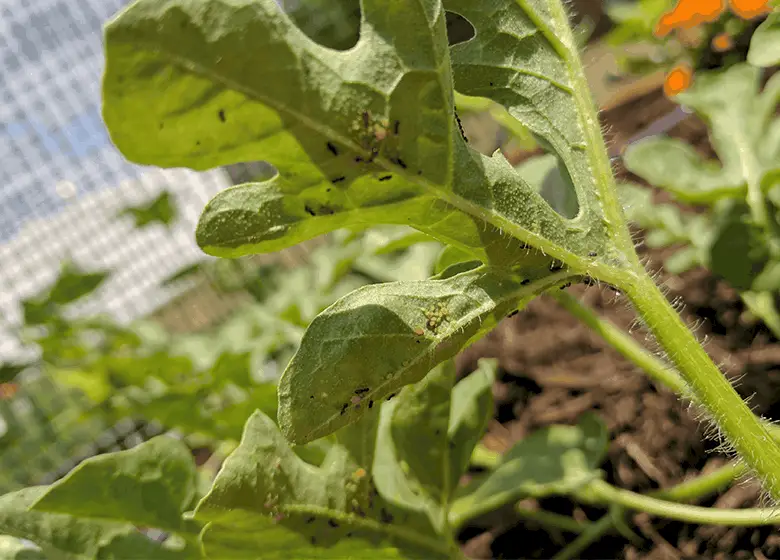
If you see ants crawling on your plants this is a sign that aphids may be nearby. The ants like to farm aphids in order to eat sweet honeydew that the bugs secrete.
Any easy way to handle aphids is by spraying your plant with neem oil (check price on Amazon). There are plenty of pesticides that contain neem oil. I try to avoid those, but 100% neem oil is safe and a great pest deterrent.
You may also run into a few caterpillars, cabbage loopers and armyworms. An effective way to control any kind of worm or caterpillar is the use of B.t.
Harvesting Watermelons
From the time you plant your seeds until you harvest your melons, you can expect to wait about 60-90 days.
Unfortunately, there is no sure-fire way of telling when a watermelon is completely ripe. There are a few things that you can look for though that will give you a good idea.
First, check out the bottom of the fruit. The spot where it’s been laying on the ground should be a nice golden yellow when ripe. It will be a pale milky color when unripe.
Also, look at the tendril closest to the melon. When that shrivels up and turns brown that is another sign that the melon may be ripe.
You can expect to get anywhere from 2-4 watermelons per plant.
Do You Need To Prune Watermelon?
Below is a good video on how to properly prune a watermelon. This can save you some space when growing your plants.
However, you don’t want to prune too heavily before fruit set. Watermelons make both male and female flowers and they need both in order to set fruit.
So if you prune your plant away too early you may not have enough flowers for the necessary pollination to happen.
You Might Also Be Interested In:
